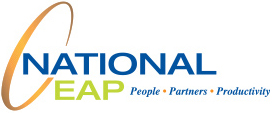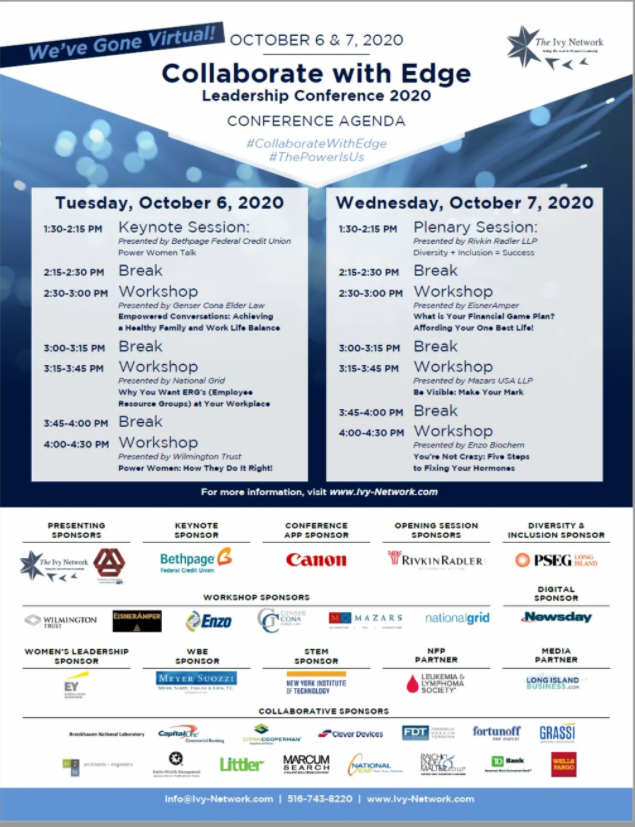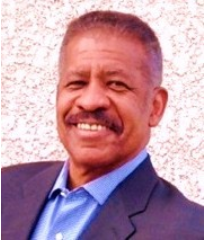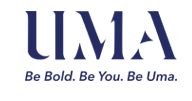Author: admin39
National EAP is a proud sponsor of the virtual Collaborate with Edge Leadership Conference, held on Tuesday, October 6th and Wednesday, October 7th. This 2-day event brings together all levels of leadership to discuss the impact of COVID-19 and continues the conversation on advancing women, leadership parity, and gender equity in the workplace.
On October 8th at 12 pm EST, National EAP hosted a special edition of our Diversity and Inclusion Education Series: D&I Best Practices for HR with Q&A. We spoke to expert, Terrence Simmons of OneTeam Consultants, who provided concrete strategies for how you can increase your organization’s diversity through more inclusive recruiting, interview, and management practices.
National EAP offers multiple Workplace Diversity and Inclusion training and resources such as:
- Diversity and Inclusion 101 training
- Unconscious Bias Training
- Combined Anti-Harassment and Anti-Discrimination Training
- Creating a Culture of Inclusion Training Series
- Mentoring
- Remediation Services
If you are interested in these services and would like further information please click here
On September 15th, National EAP hosted a panel discussion where we spoke to experts, Rita Kakati-Shah, Founder & CEO of Uma, and Jeffrey Schlossberg, Attorney at Law from Jackson Lewis PC, discuss how organizations can create a more inclusive workplace while reducing organizational risk. Speakers addressed topics such as affinity groups, discussing social justice in the workplace, legal considerations, and much more.
National EAP offers multiple Workplace Diversity and Inclusion training and resources such as:
- Diversity and Inclusion 101 training
- Unconscious Bias Training
- Combined Anti-Harassment and Anti-Discrimination Training
- Creating a Culture of Inclusion Training Series
- Mentoring
- Remediation Services
If you are interested in these services and would like further information please click here
Each week Long Island Business News interviews business and community leaders on a variety of topics…taking a pulse on the state of their industry.
The August 6, 2020 program titled, “The Changing Workplace Landscape Inside A Pandemic” featured National EAP Chief Executive Officer Aoifa O’Donnell, LCSW, SAP. Watch the video below as Joe Dowd, LIBN’s editor and LIBN’s associate publisher, Ali Jabbour spent time with O’Donnell discussing HR and productivity issues, as well as how to best respond to employee concerns and tensions as they relate to re-opening offices in the era of COVID-19.
View Videos >>
Each week Long Island Business News interviews business and community leaders on a variety of topics…taking a pulse on the state of their industry.
The August 6, 2020 program titled, “The Changing Workplace Landscape Inside A Pandemic” featured National EAP Chief Executive Officer Aoifa O’Donnell, LCSW, SAP. Watch the video below as Joe Dowd, LIBN’s editor and LIBN’s associate publisher, Ali Jabbour spent time with O’Donnell discussing HR and productivity issues, as well as how to best respond to employee concerns and tensions as they relate to re-opening offices in the era of COVID-19.
Increasing Self-Care for Resiliency During Crises
Self-care is critical during hard times, especially now. The nationwide protests and ongoing pandemic leaves no one untouched and can create challenging feelings such as anger, sadness, grief, anxiety, and more. Join National EAP for a live, interactive webinar that will include discussion on grief and stress and its impact, a review of healthy versus toxic coping skills and a refresher on mental health (mind/body) management to refocus and refresh yourself.
Wednesday June 10th @ 12:00 pm EST
https://attendee.gotowebinar.com/register/1801341302357510156
Wednesday, June 10th @ 3:00 PM EST
https://attendee.gotowebinar.com/register/1463702172188464140
COVID-19 has taught us many things, including things we never imagined we would need to know … like the real value of toilet paper. It also showed us how easily we took for granted the simple act of hugging a loved one or having a relaxing dinner with friends after a stressful week. In general, this pandemic has reinforced the lesson that change is the only true constant.
Our daily lives have changed drastically in the past few months, and they are going to continue to shift in the weeks to come. As business leaders, it is our job to execute the changes necessary to keep our organizations afloat. Implementing these changes can be a daunting and challenging task. Many leaders will struggle. However, there are simple strategies you can apply to make the process easier for everyone.
- Get on board. You must accept the change. If you do not understand and believe in the efficacy of the changes, your team will never buy it either.
- Tell the whole story. When you are relaying information about changes to your employees, tell them everything. Fill them in on why these changes matter, how it will affect their day to day lives, and what the expected outcomes are. If there are elements of the plan that are still developing, tell them that too. You cannot over-communicate when you are explaining changes.
- Check-in. When you are first delivering the message of change, tell your team that they can come to you with questions. Let them know when you will be available to speak with them individually. Set up office hours (virtually or in-person, depending on your current work set up). Then go beyond your office hours and reach out to the individuals and ask them how they feel about the changes. Yes, invite the feedback and listen to it.
- Listen. Inevitably, someone will voice his/her concerns about the changes you are making. Their ideas could be a business-related concern, or they could be fear-based, either way, listen. By listening to this person, you are validating their viewpoint and showing that you value and respect them. Simply listening to then can go a long way to gaining buy-in from an employee.
- Invite the resistance to be a part of the solution. If an employee says that they are concerned about a change you have presented, ask them how they would solve the problem. Often people are resistant to change because they are fearful or feel slighted, but when you invite them to provide their idea for a solution, you are engaging the person in the process and giving them a sense of control. You also might hear an idea you had not yet considered and can use this as an opportunity to create more employee buy-in by showing that you value your employee’s thoughts and ideas.
As more information is being released about the spread of the Coronavirus Disease 2019 (COVID-19), it is normal to feel anxious and worried. This week, National EAP will be hosting two live webinars to provide education on how to manage feelings of stress and anxiety related to the COVID – 19 outbreak. The webinars will address the impact of stress, how to effectively manage the media, and strategies to build mental strength and resiliency during stressful times.
Please see below for the times and the links for the Building Mental Strength During the COVID-19 Outbreak Webinars:
– Wednesday, March 11th @ 4pm EST
https://attendee.gotowebinar.com/register/8237963733233268491
– Friday, March 13th @ 10am EST
https://attendee.gotowebinar.com/register/1086579577480530443
You can find a flyer advertising these webinars in our resource section on our website that employers can send to their employees. To access this flyer, click here or visit www.nationaleap.com, click “Resources” and “Employers.” Members can also find up to date information on the “News for You” Tab of our Member Only Website http://www.powerflexweb.com/login_1610.html . Your company name is your username and password.
A recording of this training will be available for replay. If you would like to request a copy, please email Erinmckown@nationaleap.com
EAP counselors are available 24/7 and can be reached at 1-800-624-2593. If there is anything you need, please do not hesitate to reach out.








